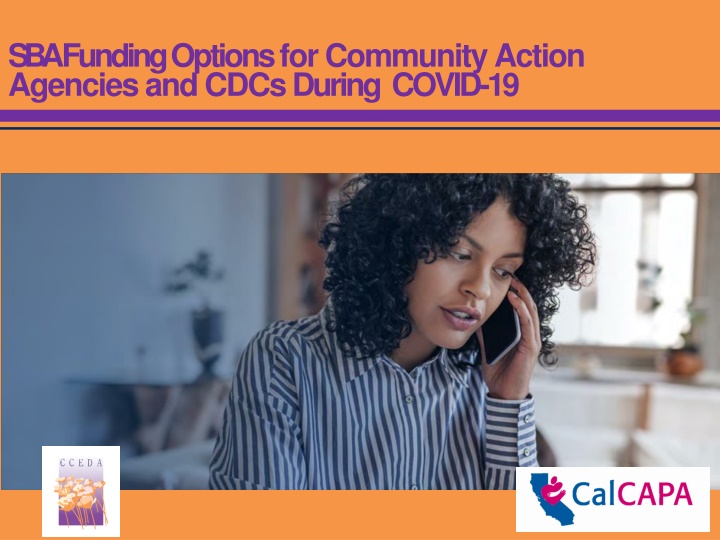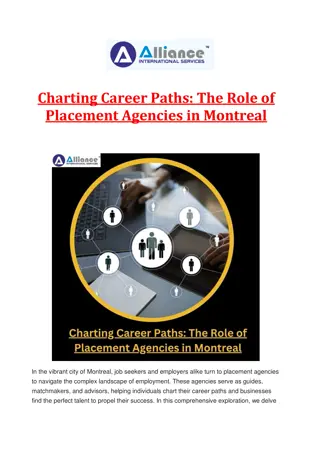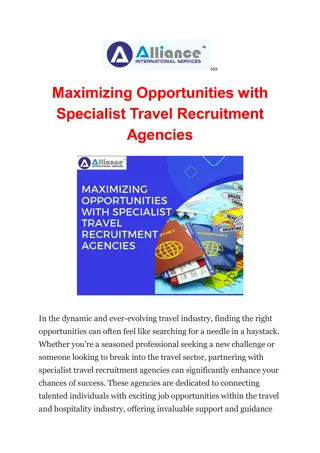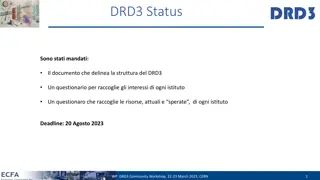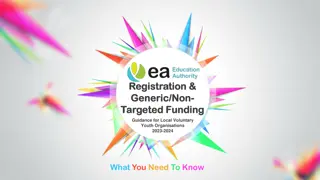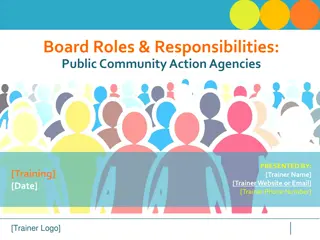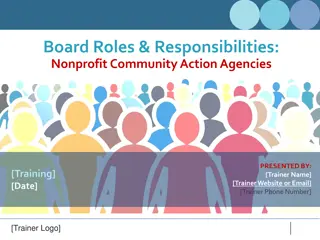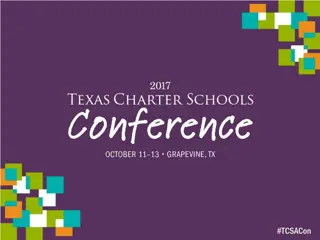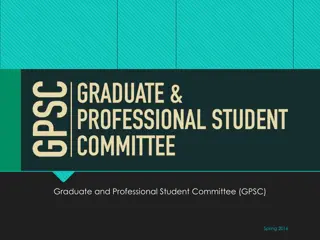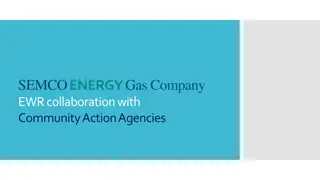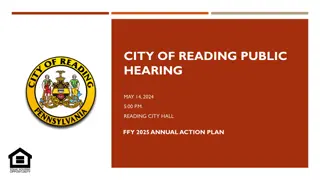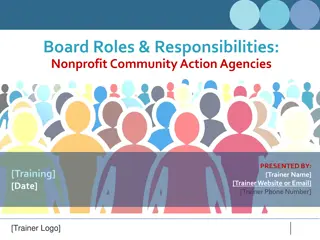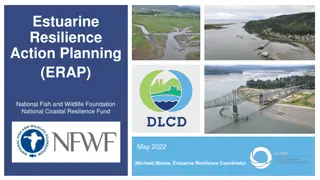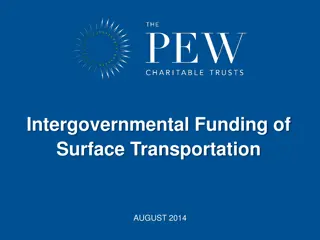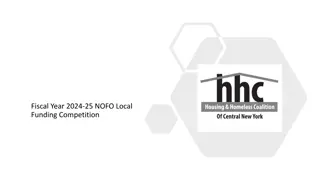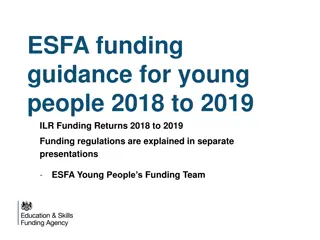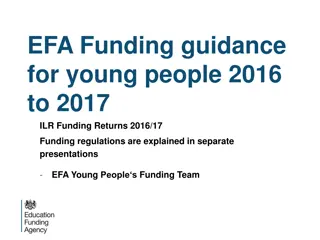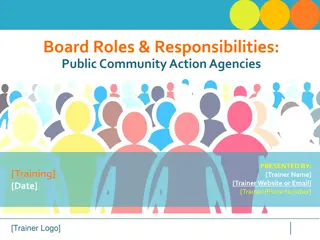Funding Options for Community Action Agencies
California Community Economic Development Association (CCEDA) and CalCAPA provide support and resources for community development organizations in California. Learn about the role of non-profits in COVID-19 response and key tips during the pandemic.
Download Presentation

Please find below an Image/Link to download the presentation.
The content on the website is provided AS IS for your information and personal use only. It may not be sold, licensed, or shared on other websites without obtaining consent from the author.If you encounter any issues during the download, it is possible that the publisher has removed the file from their server.
You are allowed to download the files provided on this website for personal or commercial use, subject to the condition that they are used lawfully. All files are the property of their respective owners.
The content on the website is provided AS IS for your information and personal use only. It may not be sold, licensed, or shared on other websites without obtaining consent from the author.
E N D
Presentation Transcript
SBA Funding Options for Community Action Agencies and CDCs During COVID-19 fffff
Who is CCEDA and CalCAPA? CALIFORNIA COMMUNITY ECONOMIC DEVELOPMENT ASSOCIATION (CCEDA) serves as a clearinghouse for information and action that advances the field of community economic development through training and continuing education, technical assistance, and advocacy on public policy. All CCEDA s activities serve our membership organizations actively engaged in revitalizing California s neighborhoods, including resident driven community development corporations, local governments, community action agencies and faith based institutions. CalCAPA envisions an abundant world in which people of all backgrounds are self-sufficient, equitably sharing resources, embracing social responsibility and enjoying collective prosperity. CalCAPA strives to be the premier poverty- fighting membership organization in California where culture and commitment created by our dynamic leadership and innovative staff supports individual and organizational excellence and sustainability.
Presenter Roberto Barrag n is the Executive Director of the California Community Economic Development Association, and assists Community Development Corporations (CDCs), Community Action Agencies and Community Development Financial Institutions (CDFIs) to conceptualize, structure, fund and manage community led real estate projects, that serve low and moderate income communities, to plan, fund, establish and expand robust community economic development programs, including micro and small business lending programs, strategic and innovative community reinvestment solutions, social venture business plans and funding strategies, fund development plans and campaigns. Mark Quinn has had a 40+ year career in public service supporting community economic development and small and microbusiness development. Currently, Mark serves as a Senior Advisor at CAMEO on an Intergovernmental Personnel Agreement on detail from his position with the SBA. Quinn has worked for the U.S. Small Business Administration in several capacities, both in San Francisco and Washington. He served as SBA District Director for 25 years
Non-Profits andCOVID-19 Nonprofit organizations play a vital role in being that 3rd responder: helping communities recover from disasters and providing critical services and protecting JOBS, and community businesses all ofwhich contribute to establishing an equitable economy Non-Profits are experienced in managing government and foundation grants, which is an advantage during this uncertain time. Mustkeep eyes on all opportunities, SBA, CDBG, CSBG, EDA and philanthropy
Tips duringCOVID-19 Beware of Fraud already fake websites, phishingattempts from banks,: brokers, etc. Speakwith landlord/creditors. Can you defer payments, negotiate anewrate? Communication iskey. Is there a new opportunity to partner,leverage resources, etc. with anotherbusiness/organization? Communicate with your board/donors/funders. Let themknow where youstand. How is your cashflow? Do you havebusinessinsurance? Business Interruption Insurance, if you have it, has occurred. File aclaim.
What is the Economic Injury Disaster Loan?(EIDL) EIDL is a working capital loanthroughSBA. Funds comefrom U.S. Department of Treasury NOT from a bank or lender In this disaster, Credit score and collateral are NOTsupporting factors inthe application, Cashflow ( did you have a 2019/2018/2017 surplus or negative) is a determiningfactor Non-profits with IRS tax exemption under sections501(c),(d), or (e) are eligible. Non-profit interest rate is 2.75% , small biz rateis 3.75% Can borrow up to $2million Up to 30-yearterm
Economic Injury Disaster Loans(EIDL) Debt service capacity is a qualifying factor; can your organization pay back the loan based on historical cashflow; payments deferred12 months Loans under $250,000 do not requirecollateral Apply on-line: www.covid19relief.sba.gov Deadline to apply12/31/2020 Advance Loan: Up to $10,000 MAY be forgiven Advances are tied to number ofemployees
What Can I Use EIDLFor? To cover revenue losses suffered since February 2020 You may project up to a year of damage as a result of the pandemic. Payroll and other general operating expenses that youmay not beableto paybecauseof impactsfrom COVID-19 for the next 6 months Fixed Expenses (e.g. insurance, mortgage interest, rent.) and Accounts Payable
What do I need toapply? You ll need SBA form P- 019 (Revenue and COGS for 12months). *We recommend you complete these forms firstbefore visiting the online SBA application at:covid19relief.sba.gov. The form should take about 30 minutes to complete. *These figures should come from your 2019 tax return or financial statements. Use 2018 ifyou have not yet filed your2019 taxes.
EIDL NewApplication If you applied before March 30thREAPPL Y Credit limitations have beenexpanded This is the only way to be considered for the (up to)$10K Advance Loan The Advance Loan MAY be forgivable Apply online: www.covid19relief.sba.gov
What is the PaycheckProtection Program PPP? Part of the Coronavirus Aid, Relief, and Economic Security (CARES)Act $349 billion allocated; loan was designed to help smallbusinesses/non-profits keep their workforceemployed. Can be used for: Interest on mortgage payments (principal orprepayments excluded) Payroll, rent andutilities Interestonanydebt incurredpriorto Feb.15,2020 No debt service calculation, non recourse loan, no personal guarantees Non profits can apply for both EIDL and PPP
Paycheck Protection Program(PPP) Low-interest loan: 1%/2-year-term Can borrow up to $10million First payment is deferred for sixmonths. Know yourpayroll; yourloanamount will bedetermined by:2.5xyour average monthly payroll costs capped at $100K peremployee Must keep employees on payroll or rehire to same levelas before layoffs You can apply through Your Bank, first, orany existing SBA 7(a) lender (if they are participating in PPP) any participating federally insured depository institution or federal creditunion.
PPP - EligibilitySpecifics Eligibleentities: Businesses with fewer than 500employees 501(c)(3) nonprofitorganizations Certain tribal businessconcerns Eligible self-employedindividuals Faith-Based Organizations Independentcontractors Soleproprietorships Businesses in the accommodation and food services industry (NAICS72) that have less than 500 employees per physicallocation
Will PPP Loans BeForgiven? HowMuch? A borrower is eligible for loan forgiveness equal to the amount the borrower spent on the following items during the 8-week period beginning on the dateof the origination of the loan: Payroll costs (using the same definition of payroll costs used to determineloan eligibility) Interest on the mortgage obligation incurred in the ordinary course ofbusiness Rent on a leasing agreement Payments on utilities (electricity, gas, water, transportation, telephone, or internet) Theamountof loanforgivenessis reducedif thereisareductioninthenumberof employees or a reduction of greater than 25% in wages paid toemployees Apply for loan forgiveness through lender Submit documents verifying: # full-time employees and pay rates Eligible mortgage interest, lease, and utility payments Decision expected within 60 days
FAQ Can I apply for the EIDL and the PPP? Yes, but you can t use the fundsfor the same thing (no double-dipping) If I apply for the EIDL, is it true that 3 days later a $10,000 grant will be deposited into myaccount? No. Remember, the EIDL is a LOAN. There is an opportunity for loan forgiveness however this will be determined by SBA. It is true that applicants may receive a $10,000 advance, and if the EIDL is denied, the advance will be forgiven. We also have not heardanyone receive $10,000 advance 3 days after application filed. Some members of my workforce are independent contractors should I include them in my payroll costs for EIDL orPPP? No, those independent contractors are not employees and are not part of your payroll cost. However, those independent contractors can each apply individually.
FAQ Do I need to have collateral for either the EIDL orPPP? Collateral is required on EIDL if looking to borrow more than $25,000. Not required on PPP . PPPs do not require personal guaranteeeither. My bank said they aren t participating in the PPP , what should Ido? The best thing to do at this point is to wait. There will be more information in the next couple of days. Community banks might be a good place to check. Is there a PPP ApplicationForm? Yes there is please find link below, however remember each bank will have its own applicationprocess. https://home.treasury.gov/system/files/136/Paycheck-Protection-Program-Application- 3-30-2020-v3.pdf
Employee Retention Credit Fully refundable payroll tax credit Employers eligible for given quarter if either: 1) Fully or partially suspends operations due to orders from gov t limiting travel or group meetings due to COVID-19; 2) or 2) Experiences significant decline in gross receipts 3) Gov t employers and PPP recipients not eligible
Employee Retention Credit Wages, compensation and qualified health plan expenses paid after March 12, 2020 and before January 1, 2021 Does not include qualified sick and family leave wages when credits received under FFCRA > 100 full-time employees in 2019 Wages paid to employee for the time employee is not providing services due to (1) or (2) 100 full-time employees in 2019 Wages paid to any employee during covered period
Employee Retention Credit Amount of Credit 50% of qualified wages and health plan expenses paid to employees during covered quarter Max per employee: $10,000 in qualified wages / $5,000 credit
Employee Retention Credit Credited against employer portion of SS tax Form 941 May request advance using Form 7200 PPP recipients not eligible for credit This section courtesy of CAPLAW
Contact Us California Community Economic Development Association CalCAPA EMAIL INFO@CALCAPA.ORG Roberto Barrag n, Executive Director Roberto@cceda.com PHONE (916) 443-1721 Jahmeel Walker, Manager Jahmeel@cceda.com
